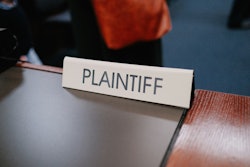
One of the four elements of a negligence claim is that the plaintiff suffered an injury or damages. In most cases the damages are straight forward, and the court awards the plaintiff for their actual damages, such as medical expenses, lost wages or property damage, as well as non-economic damages, such as pain and suffering. These damages are called compensatory damages, and the court is simply trying to make the injured party whole for any economic losses they may have suffered due to the defendant’s negligence.
In rare cases, however, the court — in addition to awarding compensatory damages — can also award punitive damages. As the name implies, punitive damages are intended to punish the defendant for their outrageous misconduct. The most famous example of punitive damages is the McDonald’s coffee case, in which a 79-year-old woman suffered third-degree burns after she accidentally spilled McDonald’s coffee in her lap. Because McDonald’s had received more than 700 reports of people burned by their coffee to varying degrees of severity and still failed to take any corrective measures, the jury awarded the plaintiff $2.7 million in punitive damages. The plaintiff, however, did not receive the full amount. Believing that the award amount was excessive, the trial judge reduced it to $480,000.
Though damages are awarded by a jury, judges are free to reduce the award in cases where they feel the amount is excessive. This is exactly what happened in the case of Thapa v. St. Cloud Orthopedics Associates, 2023 U.S. Dist. LEXIS 191976 when a jury found the defendant negligent in its care and treatment of the plaintiff and awarded him $10 million in past pain, disability, disfigurement, embarrassment and emotional distress, plus $493,073.22 in past medical expenses. The jury also awarded the plaintiff $100 million in future pain, disability, disfigurement, embarrassment and emotional distress, and $758,486 in future medical expenses, for a total award of $111,251,559.22.
Fractured future
Anuj Thapa was a 19-year-old, first-year college student at St. Cloud State University in Minnesota. While playing soccer, Thapa fractured his left tibia and fibula and was taken to St. Cloud Hospital, where he underwent surgery. Dr. Chad Holien, an orthopedic surgeon, performed the surgery, and William Paschke, a certified physician’s assistant, assisted in treating Thapa, who was discharged from the hospital the following night.
Thapa returned to St. Cloud Hospital six days later complaining of pain. Dr. Matthew Hwang, an orthopedic surgeon, discovered that Thapa had experienced acute compartment syndrome, a condition that, if untreated, can cause severe tissue damage and tissue death resulting in the loss of body function. Thapa was forced to undergo a dozen additional surgeries, still walks with a limp and continues to experience pain in his left leg.
As a result of his injuries, Thapa sued St. Cloud Orthopedic Associates Ltd., asserting claims of negligence and medical malpractice. After a trial, the jury found the defendant negligent and awarded Thapa the aforementioned $111.25 million for past and future damages.
Passion and prejudice
On appeal, the defendant moved for a new trial, alleging evidentiary errors and attorney misconduct. In the alternative, the defendant argued it was entitled to a new trial on liability and damages because the jury’s verdict was “shockingly excessive and tainted by passion and prejudice” or, at a minimum, a substantial reduction in damages.
In concluding that district courts have the discretion to grant a new trial, the appellate court held that it could only do so if the court believed that the verdict was so contrary to the evidence as to amount to a miscarriage of justice. In other words, the court held that it should only grant a new trial when the verdict is so contrary to the preponderance of the evidence as to imply that the jury failed to consider all the evidence or acted under some mistake.
In reviewing the evidence, the court found that none of defendant’s five alleged evidentiary errors supported granting a new trial. Even if there were evidentiary error, the court held that the cumulative effect of any errors did not substantially influence the jury’s verdict. Nor was the verdict against the defendant so contrary to the evidence as to amount to a miscarriage of justice, requiring a new trial. The court also rejected the defendant’s argument that the jury’s verdict was motivated by passion and prejudice.
In examining whether the verdict was excessive, the court held that it was guided by the law of the forum state — Minnesota. In determining whether the verdict is excessive, in Minnesota, the trial judge must consider all the evidence, the demeanor of the parties, and the circumstances of the trial.
If a trial court determines that a jury award is excessive, it may order a new trial or condition a denial of a motion for a new trial on the plaintiff’s acceptance of a remittitur (reduction of the damages). However, the court should not grant remittitur just because it would have awarded a different amount than the jury. Rather, the court should order a remittitur only when it believes the jury’s award is so grossly excessive as to shock the judicial conscience.
While the court agreed that the size of the verdict was extraordinarily large, it found no indication that it was given under the influence of improper passion and prejudice. Considering the evidence presented at trial, the demeanor of the parties, and the circumstances of the trial, the court held that it could not conclude that a new trial was warranted based on the facts and the evidence presented.
Astronomical award
As for the size of the award, however, the court concluded that while awards for pain and suffering are highly subjective and should be committed to the sound discretion of the jury, in reviewing the trial transcripts, the parties’ filings and the applicable law, the jury’s $110 million non-economic damages award was shockingly excessive such that remittitur was required.
In particular, the court held that the evidence did not justify such an astronomical award. While it was true that Thapa had undergone a dozen painful surgeries to repair his leg, has significant scarring, a noticeable gait-altering limp, and still experiences pain and mobility and balance issues, it is also true that he is able to walk and take care of his daily needs. In addition, the court noted that Thapa is not using a wheelchair, does not require round-the-clock supervision, and has retained his basic cognitive functions.
Therefore, while the court was sympathetic to the pain Thapa experiences daily, the testimony and evidence presented at trial did not support an unprecedented award of $110 million in non-economic damages.
Finally, the court held that the non-economic damages awarded in this case were the largest pain-and-suffering award in a medical malpractice or personal injury case in Minnesota history by a wide margin and was the largest damages award in Minnesota and in the Eighth Circuit. In fact, the court found that the non-economic damages awarded to Thapa were more than five times greater than the largest damages award in this Circuit. Such an award, so far removed from economic realities, was grossly excessive, the court held, and permitting it to stand would shake the foundations of confidence in the judicial system. Therefore, the court concluded that the award could not stand as a matter of law, and a remittitur was required.
Having reviewed the comparable cases in Minnesota and in the Eighth Circuit, the court concluded that $10 million was the maximum amount of non-economic damages that the jury should have reasonably awarded in this case. This amount, the court held, though a significant reduction from the $110 million in non-economic damages the jury had awarded, was larger than most non-economic damages awards in cases the court identified as comparable. (Meanwhile, the court held that the jury’s economic damages award of $1,251,559.22 would stand.)
The court gave Thapa the option of either accepting the reduced amount of $11,251,559.22 ($10 million in non-economic damages and $1,251,559.22 in economic damages) or facing a new trial on the issue of non-economic damages. Unwilling to accept the reduction in damages, Thapa will face a new jury that will determine his non-economic damages.
Rare reduction
What lessons can sport and recreation managers take away from Thapa v. St. Cloud Orthopedics Associates, 2023 U.S. Dist. LEXIS 191976?
The first takeaway is the size of the award. The jury was willing to award Thapa non-economic damages more than five times greater than any previous negligence case. Sport and recreation managers, therefore, should be asking themselves if this is a new trend in jury awards, and if so, whether their organizations or businesses have enough insurance to deal with such awards.
Second, while courts may have the power to overturn a jury’s verdict and its award of damages, courts will not use that power simply because they don't agree with the amount awarded. The only time the court will grant a new trial is if it believes that the verdict was so excessive as to not be supported by the evidence, something they very rarely want to do even in the context of potential evidentiary error. Even if the court believes that the award was excessive, as in Thapa, before the court reduces the damages award it must consider all the evidence, and not just reduce the damages because it would have awarded a different amount than the jury. Rather, the court should order a remittitur only when it believes the jury’s award is so grossly excessive as to shock the judicial conscience, an extremely hard threshold to reach.




































